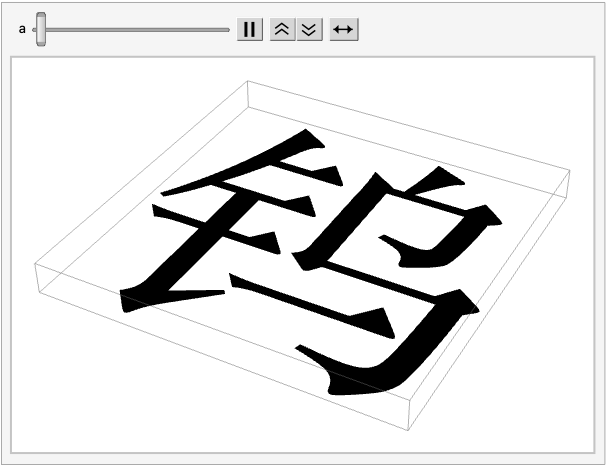Here's a silly toy:
Needs["NDSolve`FEM`"];
reg = BoundaryDiscretizeGraphics[
First@ImportString[
ExportString[Style["钨", 64, FontFamily -> "Songti SC"], "PDF"],
{"PDF", "PageGraphics"}],
MaxCellMeasure -> 0.05];
usol = NDSolveValue[{Laplacian[u[x, y], {x, y}] == -2,
DirichletCondition[u[x, y] == 0, True]}, u, {x, y} \[Element] reg];
Animate[
ElementMeshPlot3D[
ElementMeshInterpolation[usol["ElementMesh"],
a usol["ValuesOnGrid"]]
, ColorFunction -> Function[{u}, Blend[{Black, Red}, u/2.]],
ColorFunctionScaling -> False, PlotRange -> {All, All, {0, 4}}
],
{a, 0, 1},
AnimationDirection -> ForwardBackward,
AnimationRate -> 0.2]

Google translate tells me this is the Chinese character for the Latin wolframium.